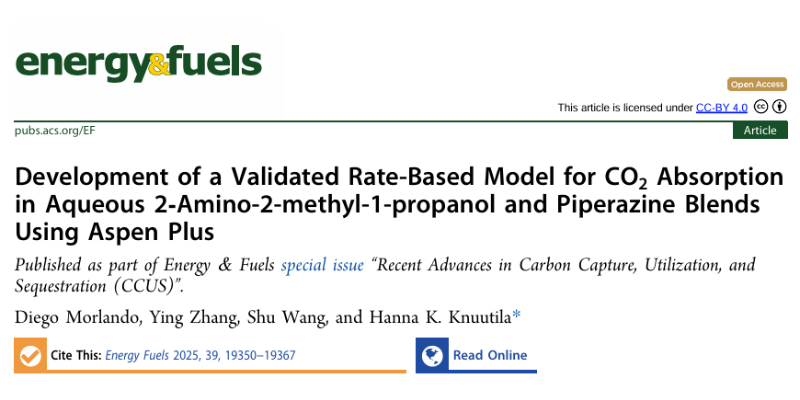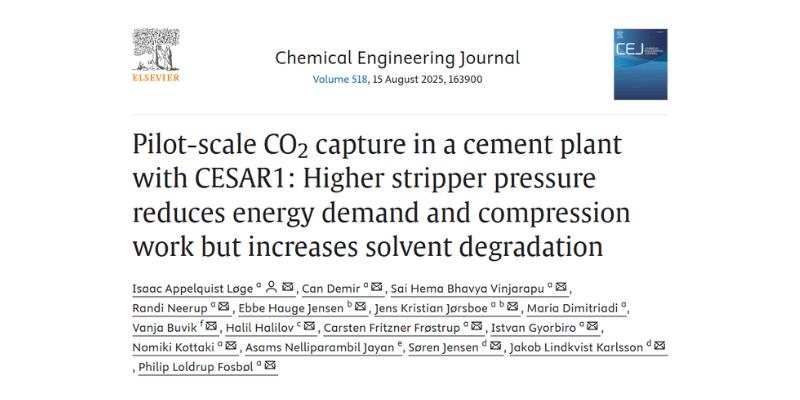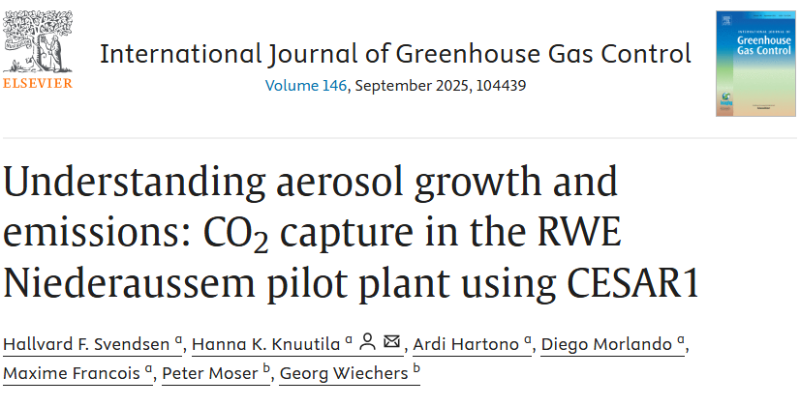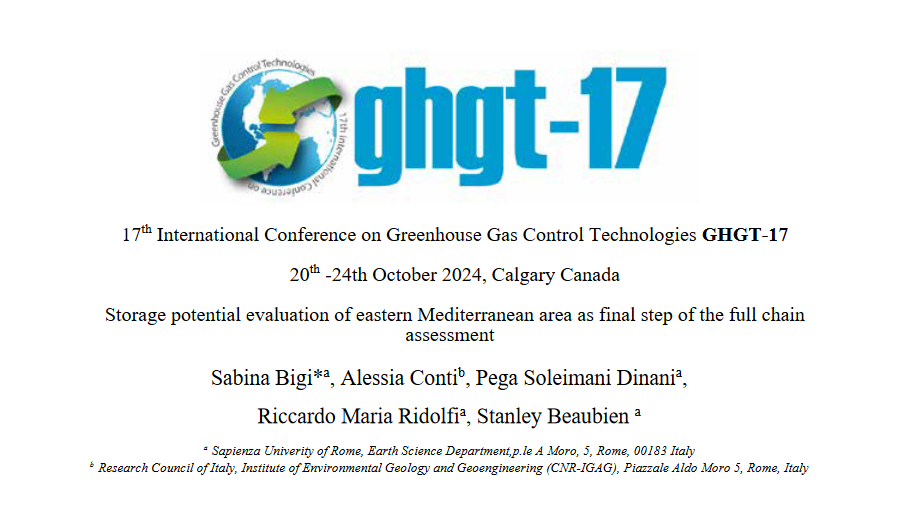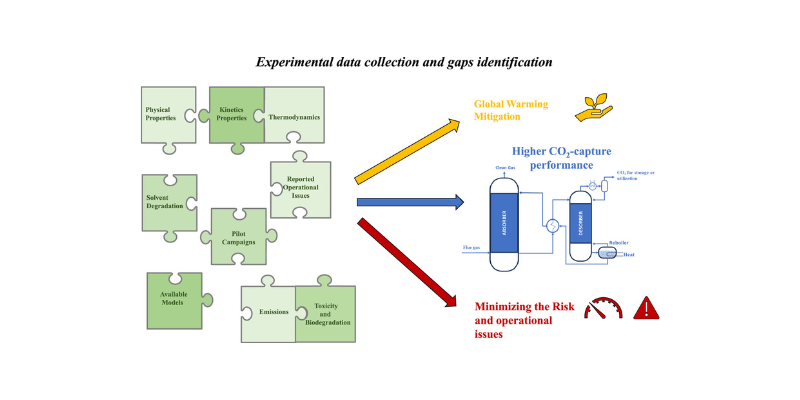A new scientific publication based on research from the AURORA project has just been released in the journal Industrial & Engineering Chemistry Research. This study delivers an in-depth analysis of the degradation behaviour of the CESAR1 solvent —a popular choice for solvent-based post-combustion CO₂ capture.
This work, developed under the AURORA project, supports the ongoing qualification and optimization of CESAR1 — a widely studied, non-proprietary solvent blend of AMP (2-amino-2-methylpropanol) and PZ (piperazine) — for long-term, commercial-scale deployment in industrial CO₂ capture applications.
📄 Title: Degradation of 2-Amino-2-methylpropanol and Piperazine at CO₂ Capture-Relevant Conditions
🧪 Authors: Vanja Buvik, Kai Vernstad, Andreas Grimstvedt, Karen K. Høisæter, Solrun J. Vevelstad, and Hanna K. Knuutila
Why Study Solvent Degradation?
In carbon capture systems, solvents like CESAR1 absorb CO₂ from industrial exhaust before it reaches the atmosphere. But over time, exposure to heat, oxygen, and other gases or contaminants can cause the solvent to degrade — producing unwanted by-products, reducing performance, and potentially creating environmental risks.
To ensure carbon capture is not only effective but also safe and sustainable, we need to understand:
- Which degradation products form.
- How quickly the solvent breaks down.
- How to manage these changes in real-world industrial conditions.
This study is a crucial step in answering those questions.
What Did the Researchers Do?
The team exposed CESAR1 to two types of stress conditions:
- Oxidative degradation – simulating exposure to oxygen in the flue gas
- Thermal degradation – simulating high-temperature environments encountered during solvent regeneration or reclaiming
They used advanced chemical analysis to identify and quantify what compounds formed under each condition.
What Were the Key Findings?
- A total of 48 degradation compounds were identified and measured in CESAR1.
- 15 of these compounds had not been previously reported in CESAR1 research.
- The solvent degraded faster as a blend than its two components (AMP and PZ) do individually — meaning chemical interactions in the blend accelerate breakdown.
- Harmful by-products such as nitrosamines and nitramines were found to form even in the absence of nitrogen oxides (NOx).
- Volatile compounds like ammonia, formaldehyde, and acetaldehyde were also detected — these can escape into the air or contaminate the captured CO₂ if not properly controlled.
- The study confirmed that the most abundant nitrogen-containing degradation products in CESAR1 have now been identified.
Why This Matters for AURORA?
This research directly supports the goals of the AURORA project by helping to:
- Develop more targeted and efficient monitoring and control strategies for CO₂ capture plants.
- Improve solvent maintenance plans, such as when and how to reclaim the solvent.
- Guide environmental safety protocols to manage emissions and waste.
- Ensure CO₂ product quality, especially when reuse or storage is planned.
Understanding solvent degradation is essential to making CESAR1 — and carbon capture more broadly — safe, cost-effective, and ready for full-scale deployment.
Authors:
- SINTEF Industry: Vanja Buvik, Andreas Grimstvedt, Kai Vernstad, Solrun J. Vevelstad.
- Norwegian University of Science and Technology (NTNU) – Department of Chemical Engineering: Hanna K. Knuutila.
- Technology Centre Mongstad (TCM): Karen K. Høisæter.
Conclusion
This study provides essential knowledge about how the CESAR1 solvent degrades under realistic CO₂ capture conditions. By identifying key degradation products and their formation pathways, the research lays the groundwork for improved solvent monitoring, safer operation, and more efficient long-term use of CESAR1 in industrial settings. These insights bring the AURORA project one step closer to enabling the large-scale deployment of carbon capture technologies across Europe.
Publication – Development of a Validated Rate-Based Model
Abstract In this work, we developed a new e-NRTL thermodynamic framework for CO2 absorption in aqueous mixtures of 2-amino-2-methyl-1-propanol (AMP) and piperazine (PZ) in Aspen Plus. The e-NRTL AMP/PZ/H2O/CO2 model was fitted on experimental data covering a range of AMP concentration from 12 to 48 mass % and PZ concentration…
Publication – Pilot-scale CO2 capture in a cement plant with CESAR1
Abstract Carbon capture from hard-to-abate industries is essential. This study investigates the effect of stripper pressure on the performance of amine-based CO2 capture from cement flue gas, using the CESAR1 solvent. Through a rigorous data filtering and binning methodology, experimental results were systematically categorized, enabling a precise evaluation of how…
New Publication: Aerosol Modeling in CO2 absorption using CESAR1
We are proud to announce that Hallvard F. Svendsen, Hanna K. Knuutila, Ardi Hartono, Maxime Francois and Diego Morlando at NTNU, together with external collaborators Peter Moser (RWE) and Georg Wiechers (RWE) have published a new article presenting results from the AURORA and SCOPE projects.The publication introduces a new class-based…
Thermodynamic Properties of CO₂ Absorption in CESAR1 — Essential Data for Better Process Modelling
We are proud to announce a new scientific publication from the AURORA project, authored by Diego Morlando, Ardi Hartono and Hanna K. Knuutila, published in Carbon Capture Science & Technology. This important work provides extensive experimental data on the thermodynamic properties of CESAR1, a key solvent blend for industrial carbon…
Conference publication – GHGT-17: Viscosity and Density data for the CESAR1 solvent
Abstract Global warming is a major issue that needs to be addressed and limited. The CESAR1 solvent blend has a high potential for becoming a commonly employed, commercial solvent system. In this work, the viscosity and density data for aqueous CO2 loaded CESAR1 (26.6 wt.% AMP 12.8 wt.% PZ) solution…
Conference publication – GHGT-17: “Storage potential evaluation of eastern Mediterranean area as final step of the full chainassessment”
The final step in capturing and storing carbon dioxide (CO₂) emissions is geological storage, where CO₂ is injected deep underground into carefully chosen locations. These locations could be natural formations like saline aquifers (underground reservoirs filled with salty water) or empty oil and gas fields.This work, part of the AURORA…
Understanding Solvent Degradation in CO₂ Capture – CESAR1 Solvent Degradation in Pilot and Laboratory Scale
The fight against climate change requires innovative solutions, and one promising method is CO₂ capture and storage (CCS). CCS involves capturing carbon dioxide from industrial emissions before it reaches the atmosphere. At the heart of this process are specialized chemical solvents, such as CESAR1, which absorb CO₂ from flue gases.While…
Turning Waste Into Opportunity: Thermal Reclamation Chemistry of Common Amine Solvents
CO2 capture technology is vital for reducing greenhouse gas emissions. But what happens when the chemicals used in this process wear out or degrade? Scientists have been studying how to rejuvenate these chemicals through a method called thermal reclaiming. This research focuses on ethanolamine (MEA), a widely used solvent for…
Closing Knowledge Gaps – Density and Viscosity of Unloaded and CO2-loaded Aqueous AMP-PZ blends
AURORA’s latest scientific journal publication provides experimental density and viscosity data on different unloaded and CO2-loaded aqueous blends of 2-amino-2-methyl-1-propanol (AMP) and piperazine (PZ) used for absorption-based CO2 capture. The paper also provides correlations for density and viscosity suitable for various modelling works.In our previous review article, we identified knowledge…
Unlocking New Potential of CESAR1-based chemical absorption Technology: Available data and knowledge gaps of the CESAR1 solvent system
AURORA latest review paper, developed in collaboration with researchers from SINTEF and NTNU, provides a comprehensive analysis of the CESAR1 solvent system. It collects and evaluates existing experimental data, highlights knowledge gaps, and outlines the necessary next steps in research to optimize the use of CESAR1 for CO₂ capture.In the…


